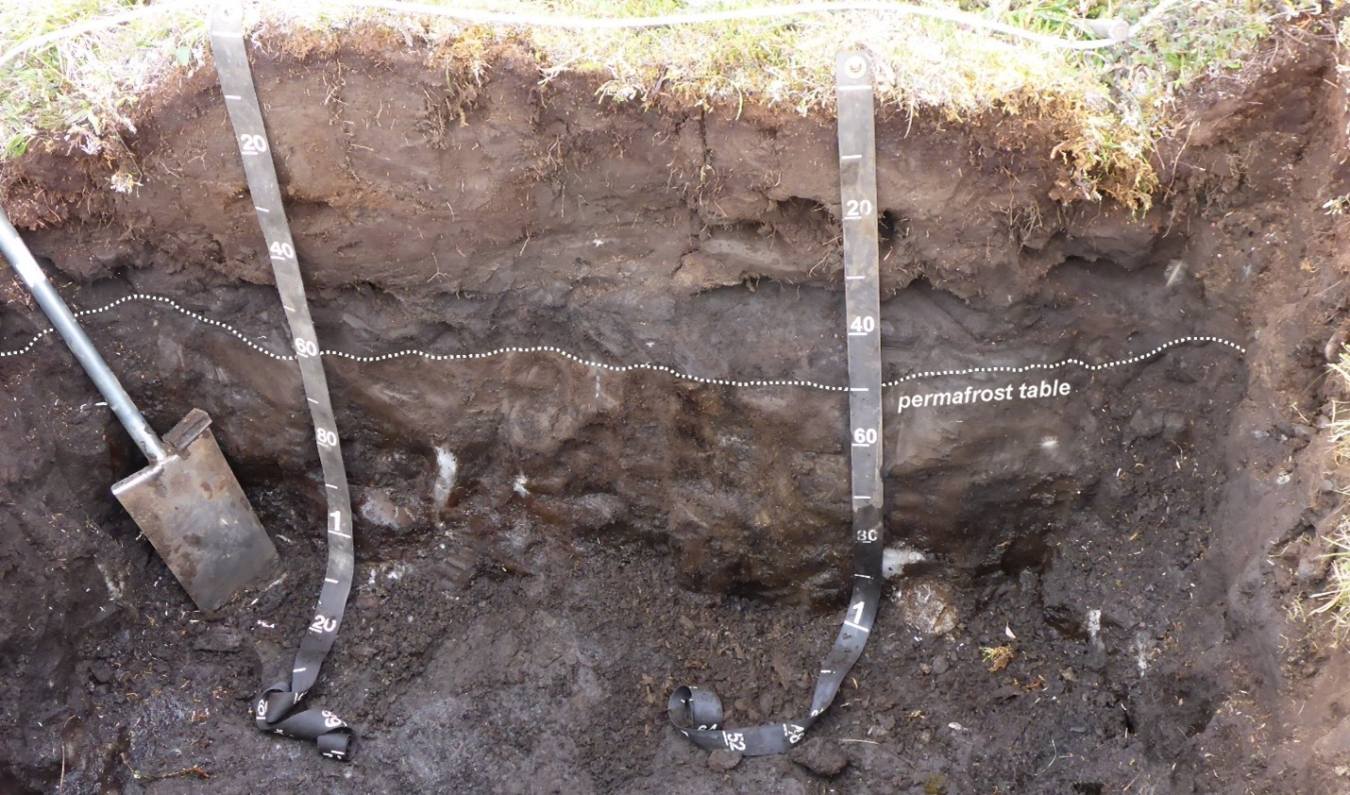
Soil is a complex mixture of organic material, minerals, air, and water. It ranges from sandy, ocean-weathered beaches to soggy peat bogs and permafrost soils. Soils are a vital component of terrestrial ecosystems, and provide habitat for a large diversity of plants, animals, and microorganisms. Minerals in soil form from the breakdown of rocks by chemical and physical processes as well as the action of plants and microorganisms. Living organisms also contribute organic material to soils from roots, leaves, and decaying biomass. Layers of soil sit on top of partially weathered to intact bedrock (or parent material) that often extends deep into the subsurface.
The soil environment is a complex and diverse ecosystem. Even a cup of soil contains millions of different kinds of microorganisms like fungi, bacteria, and nematodes. It is also the main source of water and many of the nutrients plants need to grow, including nitrogen, phosphorus, and potassium as well as important micronutrients such as iron, manganese, and zinc.
Soil contains these nutrients and minerals because of the physical, chemical, and biological forces that form soil, the composition of the parent material from which soils were formed, and the ability of soils to capture, retain, and transform compounds as those compounds enter and move through their environment. Soils have complex and wide-ranging physical structures due to geologic, climate, and biological factors. These are most evident in the presence of layers or horizons along their depth profile from the surface to the bedrock. Chemical reactions in the soil change the molecular composition of soil components, as do biological processes of plants, animals, and microbes. Soil microbial communities can also interact with plant roots through mutually beneficial relationships. For example, plant roots often leak sugars or other compounds into the soils around them to stimulate microbial communities. The surrounding microbes then break down organic and mineral molecules, thereby unlocking the nutrients inside for easier uptake by the plant roots. Detritivore animals like worms and beetles similarly break down dead leaves (detritus), allowing the detritus to more easily be incorporated into the soil as organic matter. Plant roots can alter the physical structure of the soil profile, creating pores as they grow through the soil. This releases enzymes and compounds that create clumped aggregates of soil particles. Plant roots also change the chemical composition and gradients of soil as they exchange water, gases, and nutrients with the soils surrounding the roots (the rhizosphere).
Soil also plays an important part in regulating the Earth’s climate. For example, the Earth’s soil is a huge component of the global carbon cycle. The carbon entering soils as organic matter or as minerals like carbonate accumulates over time. As a result, the carbon in soil amounts to more than three times as much as the carbon found in the atmosphere and four times as much as the carbon that plants and animals have in them. Of course, not all soil stores carbon equally. Permafrost and peat in Arctic and boreal regions store the most carbon, followed by soil in regions with moist climates. Soils of croplands contain substantial stocks of carbon but often lose carbon due to agricultural practices. Desert soils store less carbon than other biomes.
DOE Office of Science: Contributions to Soil Research
Because soil is an essential component of ecosystems and crucial for plant growth, the Department of Energy (DOE) funds scientists to study soils, the microbes that live in them, and their ecological and biogeochemical processes to understand their role in a variety of Earth system cycles as well as how they help plants produce crops for biofuels and other bioproducts. The DOE Office of Science supports research on soil through its Biological and Environmental Research (BER) program, including both the Genomic Science Program’s environmental systems biology research and the Environmental System Science program’s focus on terrestrial ecosystems and watersheds. DOE seeks to understand microbial and plant systems using genomic science, computational analyses, and field-based characterization and experiments. Through these soil research efforts, scientists will be able to better predict the future of the Earth’s soils and their contribution to Earth system processes, and to design better strategies to support bioenergy applications and reduce humanity’s environmental impact.
Fast Facts
- Scientists created see-through artificial soil to observe how roots grow.
- How powerful is soil as a way to store carbon? Soil traps about 25 percent of the carbon dioxide that we produce from burning fossil fuels.
- Asmeret Asefaw Berhe, the director of the DOE Office of Science, is a soil scientist. Watch her TED talk about soil as a solution to climate change.
- The texture and historical nature of soils affects how they respond to moisture extremes like floods and droughts.
- When soil warms up, it changes how microbes interact.
Resources
- DOE Office of Science, Biological and Environmental Research program.
- Read the DOE Office of Science, Biological Systems Science Division’s 2021 Strategic Plan.
- Read the DOE Office of Science, Earth and Environmental Systems Sciences Division’s 2018 Strategic Plan.
- Learn about DOE’s Environmental Molecular Sciences Laboratory user facility, which houses a huge range of instruments and modeling resources for understanding biological and environmental systems.
- Learn about DOE’s Joint Genome Institute user facility, which houses tools for studying the DNA of plants, microorganisms, and microbiomes.
- Learn how past disturbances can continue to shape soils.
- Learn more at From Dirt to Digital: The Story of Soil Carbon Science
Scientific terms can be confusing. DOE Explains offers straightforward explanations of key words and concepts in fundamental science. It also describes how these concepts apply to the work that the Department of Energy’s Office of Science conducts as it helps the United States excel in research across the scientific spectrum.

